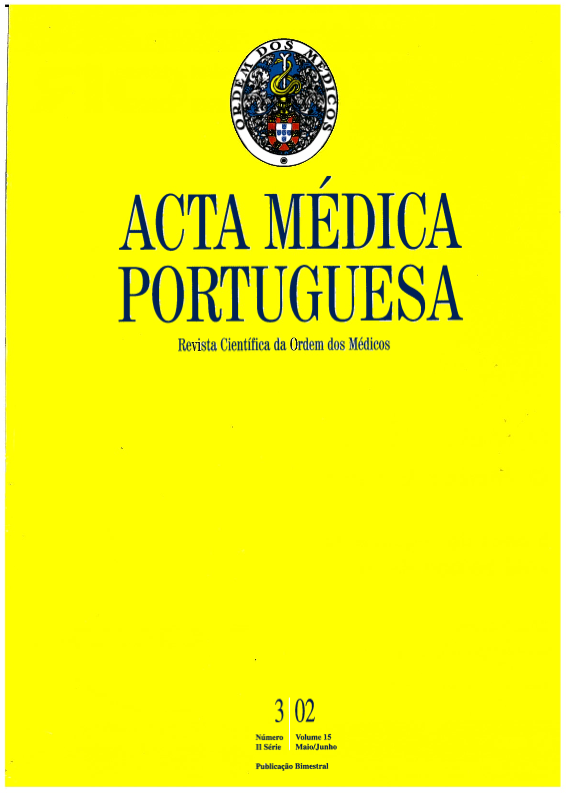Radiotherapy of pituitary tumors.
DOI:
https://doi.org/10.20344/amp.1929Abstract
The aim of this study is to evaluate the use of conventional external radiotherapy in patients with pituitary adenomas. Between October 1970 and May 1998, 27 patients with pituitary adenoma were followed at the Department of Endocrinology and Diabetes of the Hospitais da Universidade de Coimbra. They received radiation therapy at Instituto Português de Oncologia. Seven of those tumors were classified as nonfunctioning adenomas, 17 as growth-hormone-secreting adenomas, 2 as prolactinomas and 1 as adrenocorticotropic adenoma. Twenty-six patients received radiation as adjuvant therapy after incomplete resection and one patient as primary treatment. The majority of these cases were treated using the parallel opposed-field technique with a total dose between 45 and 52 Gy. The patients were submitted, before and after radiotherapy, to a protocol in order to assess the efficacy of this treatment. Some of the results were analyzed. Reduction of tumor mass was achieved in 66.6% of nonfunctioning tumors and in 25% of the secreting ones. Reduction or stabilization of hormonal levels was achieved in 55% of the cases and normalization in 30%. The average duration of follow-up was 126.3 months. Complications observed: hypopituitarism, stroke (3 patients), cerebral edema (1 patient), memory loss (2 patients) and hearing loss (2 patients). None of the patients developed brain tumors.Downloads
Downloads
How to Cite
Issue
Section
License
All the articles published in the AMP are open access and comply with the requirements of funding agencies or academic institutions. The AMP is governed by the terms of the Creative Commons ‘Attribution – Non-Commercial Use - (CC-BY-NC)’ license, regarding the use by third parties.
It is the author’s responsibility to obtain approval for the reproduction of figures, tables, etc. from other publications.
Upon acceptance of an article for publication, the authors will be asked to complete the ICMJE “Copyright Liability and Copyright Sharing Statement “(http://www.actamedicaportuguesa.com/info/AMP-NormasPublicacao.pdf) and the “Declaration of Potential Conflicts of Interest” (http:// www.icmje.org/conflicts-of-interest). An e-mail will be sent to the corresponding author to acknowledge receipt of the manuscript.
After publication, the authors are authorised to make their articles available in repositories of their institutions of origin, as long as they always mention where they were published and according to the Creative Commons license.









